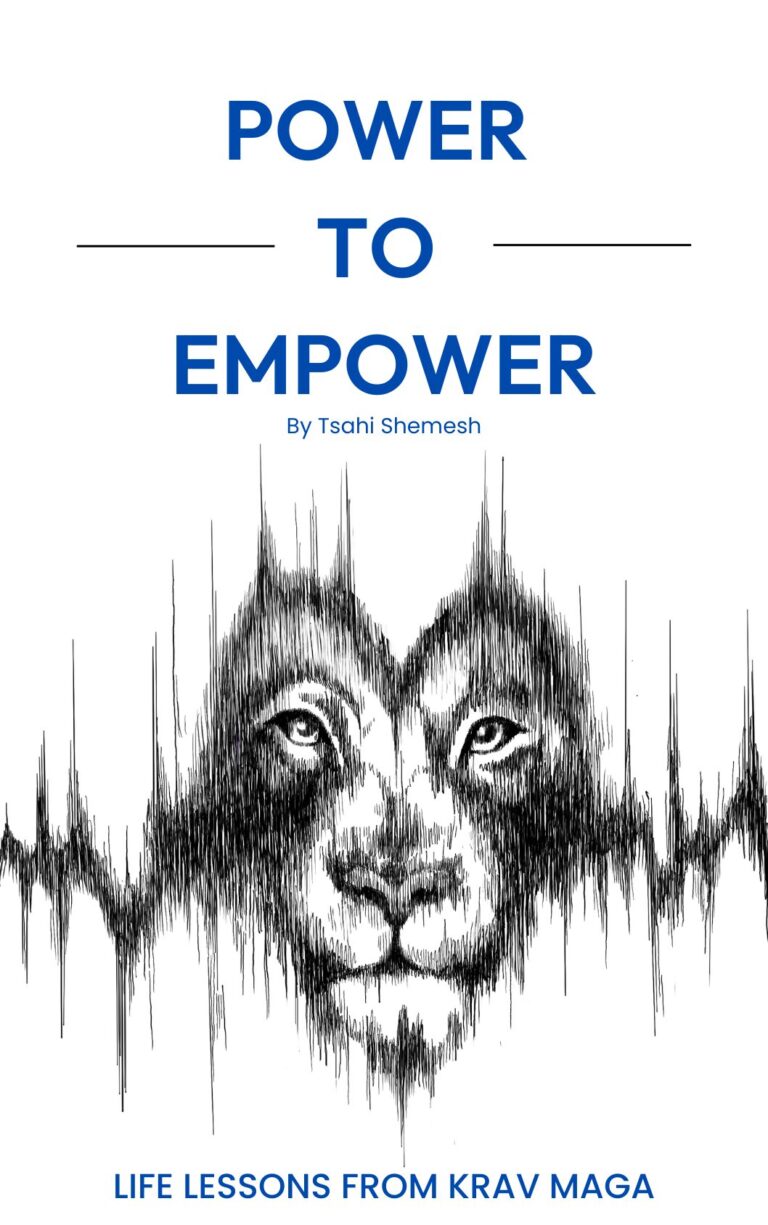The Truth About Self-Defense, Krav Maga, and Surviving Real Violence
If you’re serious about protecting yourself, there’s a question you have to ask—one that most martial artists, gym owners, and “self-defense experts” don’t want to answer honestly: What fighting style actually works in a real street fight? Not in a controlled environment. Not in a competition. Not in theory. But in real violence—on concrete, in chaos, and under pressure.
Most people think they know. They watch UFC highlights, they see slick Instagram moves, or maybe they earned a few belts in traditional martial arts. They assume that training equals preparation. The reality? Most of what’s taught in martial arts studios has little to do with what you’ll face when someone decides to hurt you in the real world.
I’ve spent decades teaching self-defense, training soldiers, civilians, and law enforcement, and breaking down thousands of videos of actual street fights. If you care about your safety—or the safety of your family—what follows isn’t theory. It’s the hard truth about what works, what doesn’t, and how to actually train for survival.
Why Most Martial Arts Fail in Real Street Fights
Let’s get one thing straight: most martial arts were never designed for modern street violence. Karate, taekwondo, kung fu, sport BJJ, and even MMA all have rules, rituals, and expectations of “fairness.” Street violence isn’t fair, and it doesn’t play by any rulebook.
Most real fights:
- Start suddenly, often with a sucker punch or ambush.
- End within 20 seconds.
- Happen at close range—sometimes clinched, sometimes on the ground.
- Involve multiple attackers, weapons, or bystanders.
- Leave zero time for warm-ups, bowing, or thinking about your next move.
If your training isn’t pressure-tested in these realities, you’re practicing choreography—not self-defense.
What Actually Works in a Real Fight?
Key Elements of Real-World Self-Defense
1. Situational Awareness and Pre-Fight Cues
The most important self-defense skill isn’t a punch or a kick—it’s the ability to spot trouble before it becomes a physical threat. Most attackers test you before they attack. They close distance with a question (“Got a light?”), scan the area for witnesses, and distract you with body language.
If you don’t learn to spot these cues, you’ll always be one step behind. Krav Maga and the best self-defense systems teach threat recognition as a foundational skill.
2. Preemptive Striking and Decisive Action
Almost every real fight I’ve studied comes down to one factor: who acts first. The person who throws the first effective strike usually wins or escapes. Waiting to “see if it escalates” or relying on complicated defensive moves gets people knocked out.
Krav Maga, boxing, and Muay Thai all teach preemptive striking—simple, direct, and designed to end the fight fast.
3. Simplicity Over Flash
High kicks, spinning moves, flying armbars—they look good on YouTube. But when adrenaline hits, your fine motor skills vanish. What works are the basics: straight punches, palm strikes, elbows, knees, low kicks. Strikes that are easy to execute under stress, that work in tight spaces, and that target vulnerable areas (jaw, nose, throat, groin).
4. Clinch, Dirty Boxing, and Close-Range Fighting
Almost every street fight ends up in a clinch. Whether it’s a headlock, bear hug, or scramble for position, you need to be able to fight in close. Muay Thai clinch, wrestling tie-ups, and dirty boxing (elbows, headbutts, short-range knees) are all essential skills. Krav Maga incorporates these elements, focusing on brutality, not style points.
5. Staying on Your Feet and Ground Survival
Getting taken down in a street fight is dangerous, especially if there are multiple attackers or weapons. Wrestling teaches how to avoid takedowns, keep your balance, and explode back up if you hit the ground. Jiu-Jitsu can be useful, but only if you focus on getting back to your feet, not playing for submissions. Sport BJJ is dangerous in the street—it exposes your back, your head, and your focus.
6. Dealing With Weapons and Multiple Attackers
This is where most martial arts fail completely. Real violence often involves knives, bottles, bats, or guns. Most styles don’t address weapons at all—or if they do, it’s with choreographed, unrealistic drills. Krav Maga, when taught properly, is pressure-tested for real weapons attacks. You learn to identify weapon cues, control the weapon-bearing limb, escape, and survive. Against multiple attackers, the goal isn’t to “win”—it’s to escape and not get surrounded.
The Hard Truth About Fighting Styles
If you’re asking, “What’s the best fighting style for self-defense?”—the honest answer is: there isn’t just one. Not if you care about what actually works when it counts.
Real self-defense isn’t about mastering a single discipline. It’s about building a system that prepares you for chaos—where there are no mats, no rules, and no second chances.
At Krav Maga Experts, we don’t just teach techniques—we teach people to fight with purpose, strategy, and adaptability. Krav Maga is the backbone of what we do, because it addresses the reality of violence: mindset, decision-making, weapon defense, and scenario-based training.
But we also know that no single approach is enough on its own. That’s why we deliberately integrate Boxing, Muay Thai, Wrestling, and self-defense-based Jiu-Jitsu into our weekly training structure.
Why? Because…
- Btriking needs timing and footwork—that’s where Boxing sharpens the edges.
- Clinch work and dirty fighting matter—that’s where Muay Thai fills in the gaps.
- Fights hit the ground sometimes—and Wrestling teaches you how to stay up or get up.
- You need options when things go wrong—and Jiu-Jitsu, when focused on self-defense, gives you tools to recover and escape.
The result is this:
Our students aren’t training for performance. They’re training for survival.
They learn to feel comfortable in discomfort. To think and move under pressure. To build structure into their strategy—not just rely on explosive reactions.
They don’t just know techniques—they understand how and when to use them, and how to respond when the plan falls apart.
That’s what real self-defense looks like.
So the question isn’t which style is best. It’s this: Are you training in a way that actually prepares you for a real fight?
Are you being tested under pressure, fatigue, and chaos—or are you just rehearsing patterns?
We train for the moments that matter.
And when they come, you won’t need to think. You’ll just move.
Why Krav Maga (When Taught Correctly) Stands Out
There’s a reason Krav Maga is the preferred system for the Israeli military, law enforcement, and elite security units. It’s not because it’s “deadlier”—it’s because Krav Maga is built for one thing: survival in unpredictable, real-world violence.
Real Krav Maga:
- Trains scenario-based fighting. Every session is built around reality, not tradition.
- Teaches you to act under pressure. Drills with noise, fatigue, low light, stress.
- Focuses on preemptive strikes and escapes. The goal is not to dominate, but to survive and protect what matters.
- Includes weapons and multiple attacker scenarios—not as an afterthought, but as core curriculum.
- Demands aggression and decisiveness. There is no “wait and see.” You act, or you lose.
But not all Krav Maga is created equal. Some schools water it down, focus on fitness, or avoid the uncomfortable truths. If your Krav Maga doesn’t leave you sweaty, uncomfortable, and thinking hard about the realities of violence, you’re in the wrong place.
Training for Reality—Not for Medals
If your goal is self-defense, your training must match the chaos of real violence:
- Train in regular clothes, not just gis or shorts.
- Practice with environmental obstacles—chairs, tables, walls, stairs.
- Pressure test with scenario drills, not just static techniques.
- Use stress drills—loud noises, time pressure, unpredictable attacks.
- Learn to recognize pre-fight indicators and act without hesitation.
Your training should scare you a little. If it doesn’t, it won’t prepare you for what’s really out there.
What Actually Keeps You Safe
It’s not about who has the fanciest technique, the most trophies, or the highest belt. Survival in a real street fight comes down to:
- Mindset: Are you ready to act, or do you freeze?
- Preparation: Have you pressure-tested your skills under stress?
- Adaptability: Can you improvise, move, and escape when things go sideways?
- Simple, brutal effectiveness: Do your skills work when you’re exhausted, scared, and surprised?
At Krav Maga Experts, we train for reality. We push hard. We tell the truth. We train what works and discard what doesn’t. Because the day you need to defend yourself isn’t a competition—it’s a test you don’t get to retake.
Don’t settle for theory. Don’t get lost in tradition. Train for the world as it is—not as you wish it would be.
Do something amazing,
<span “=””>Tsahi Shemesh
Founder & CEO
Krav Maga Experts


It is very good